Outline of Presentation
- ASD: Introduction
- Theories of pathogenesis
- Neuropathology & Neural circuits involved
- Neuroinflammation
- Mirror neuron hypothesis
- Etiopathogenesis
- Genetic factors
- Environmental factors
- Epigenetics
- Conclusion
Autism Spectrum Disorder
- Early onset neuro-developmental disorder
- Characterized by
- Impaired social communication,
- Restricted interests and
- Stereotyped and repetitive behaviors
- ASD affects about 1 in 68 individuals
- M:F= 4-5
G. Bradley Schaefer. Int. J. Mol. Sci. 2016, 17, 180
Theories of Pathogenesis
- Neuropathology
- Altered neural connectivity & Synaptopathies
- Neuronal migration defects
- Neurotransmitter imbalance
- Altered dendritic morphology
- Neuroinflammation
- Mirror neuron hypothesis
- Neural circuits involved
Watts: Pathogenesis of autism: Clinical Medicine: Pathology 2008:1 99–103
Autism Spectrum Disorders
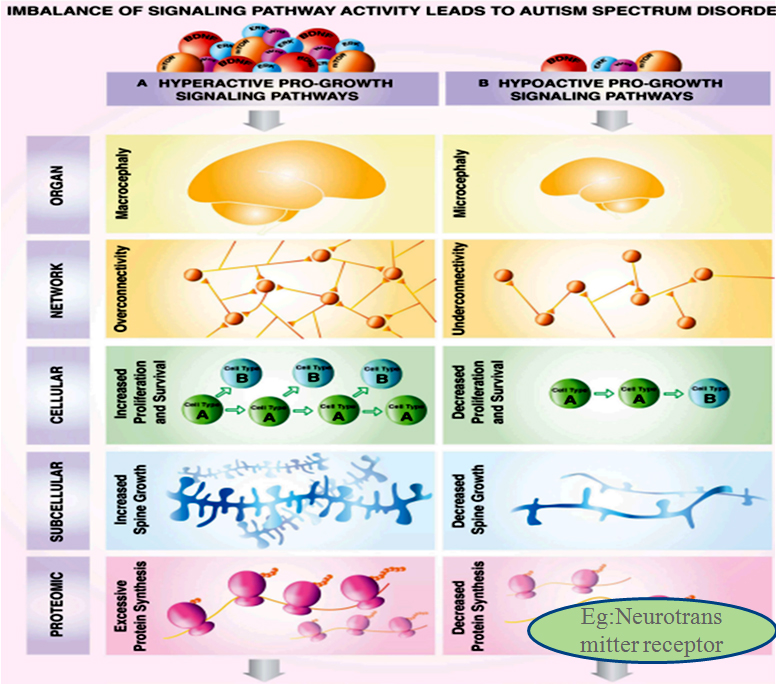
Frontiers in Neuroscience; Sept 2015
Developmental Synaptopathies
- Disorders of transcriptional regulation, local translation and protein quality control eg. Fragile X,TS,AS
- Disorders of synaptic scaffold proteins & and receptor channels
- e.g. Phelan-McDermid syndrome caused by disruption of Shank3 scaffold protein (acts as a critical link between glutamate receptors and signaling pathways, scaffold proteins and actin cytoskeleton)
Mechanisms Underlying Synaptopathies
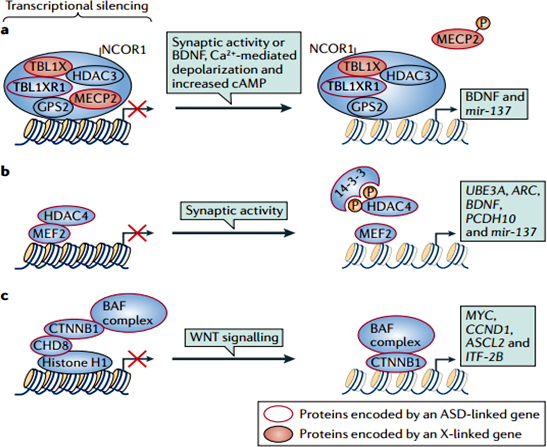
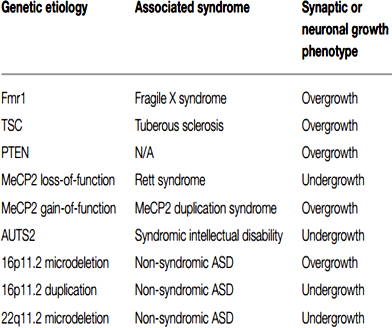
Altered Neuroimmunity
- Abnormal T-helper cell type 1/2 responses
- General suppression of cell-mediated immunity
- Antibodies against purkinje cells of cerebellum
- Subnormal levels of CD4+ lymphocytes
- Imbalance of antibody levels and reduced natural killer cell functions
Other Theories
- Theory of mind deficit : Persons with autism are unable to represent their own/ others' mental states and are thus unable to understand and predict behaviors
- Mirror Neuron hypothesis: Pre-motor and parietal cells of cerebral cortex fire action potentials both when we are in action or motion and observe others performing similar actions
Central deficit in these observed in autism leading to profound social and communication difficulties
Schmitz C. et al. Neuropathol. Appl. Neurobiol, 2008
Autism and Epilepsy
- Around 30% of autistic children have epilepsy
- Alterations in cortical subcortical connectivity
- Severe epileptiform abnormalities may permanently alter critical synaptogenesis
- Altered calcium signalling and mutations of L-type voltage-gated Ca2+ channels
Tuchman R et al . Brain Dev 2009
Krey JF et al, Curr Opin Neurobiol 2007
Neural Circuits & Other Mechanism
Neural Circuits & Other Mechanism
- Cerebello cerebral circuit
- Striatal circuit
- Role of microglia
- Subcellular dysfunction (at molecular level)
Cerebellar Circuit
- 35–95% fewer cerebellar Purkinje cells in ASD brains compared to controls
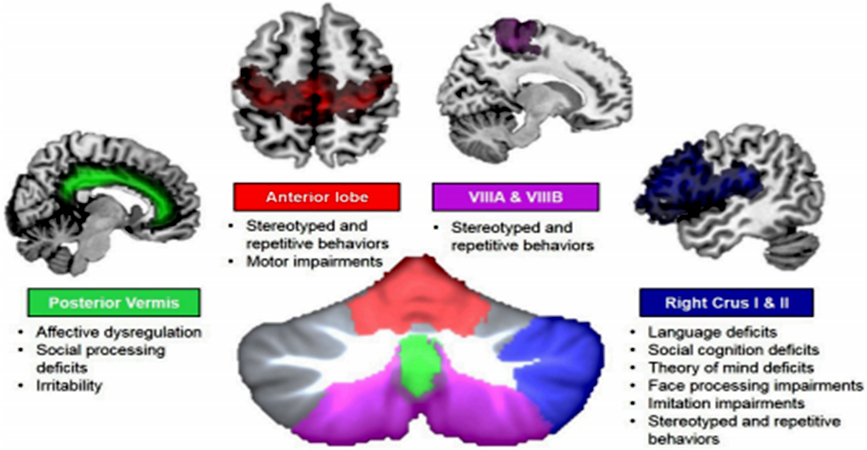
Mosconi MW, Wng Z, Schmitt LM et al. Front. Neurosci. 9:296, 2015
Striatal Circuit
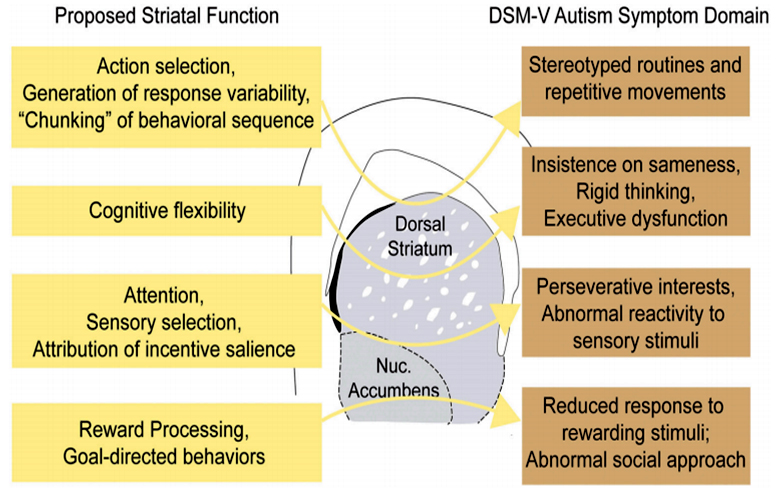
Fuccillo MV et al. Front. Neurosci. 10:27, 2016
Role of Microglia
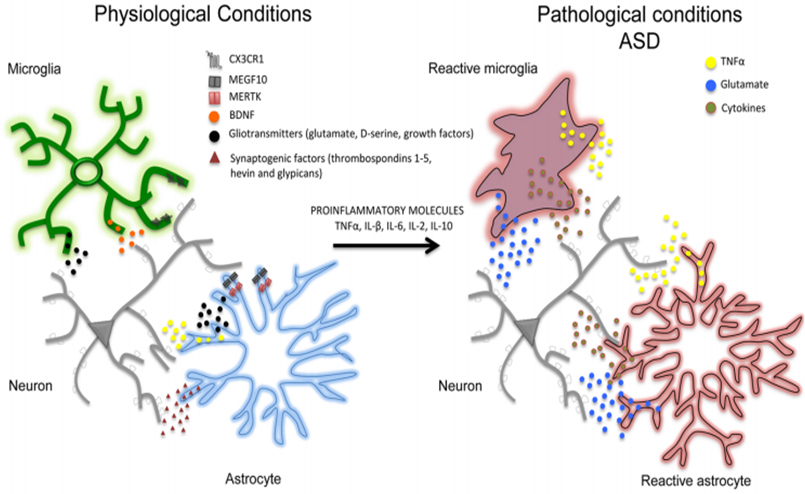
Petrelli F, Pucci L, Bezzi P et al. Front. Cell. Neurosci. 10:21, 2016
Oxidative Stress and Mitochondrial Dysfunction
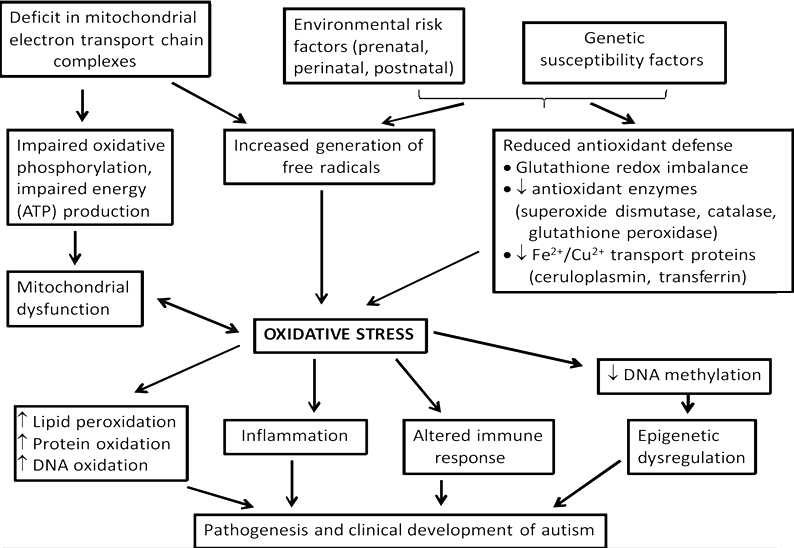
Rossignol DA, Frye RE. Mitochondrial dysfunction in autism spectrum disorders: a systematic review and meta-analysis. Molecular Psychiatry. 2012;17(3):290-314
Etiopathogenesis
- Genetic factors
- Environmental factors
- Epigenetics
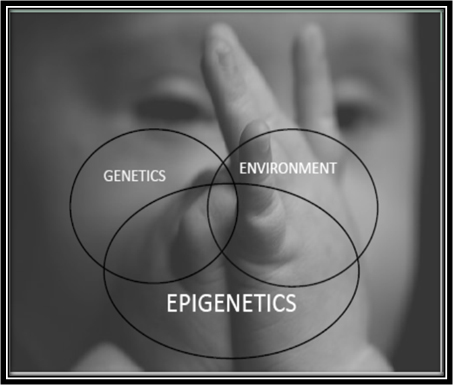
Genetic Factors
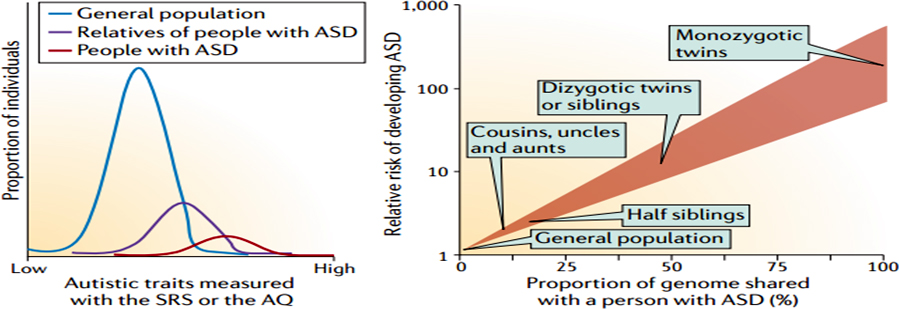
Genetic Factors: Syndromic Autism
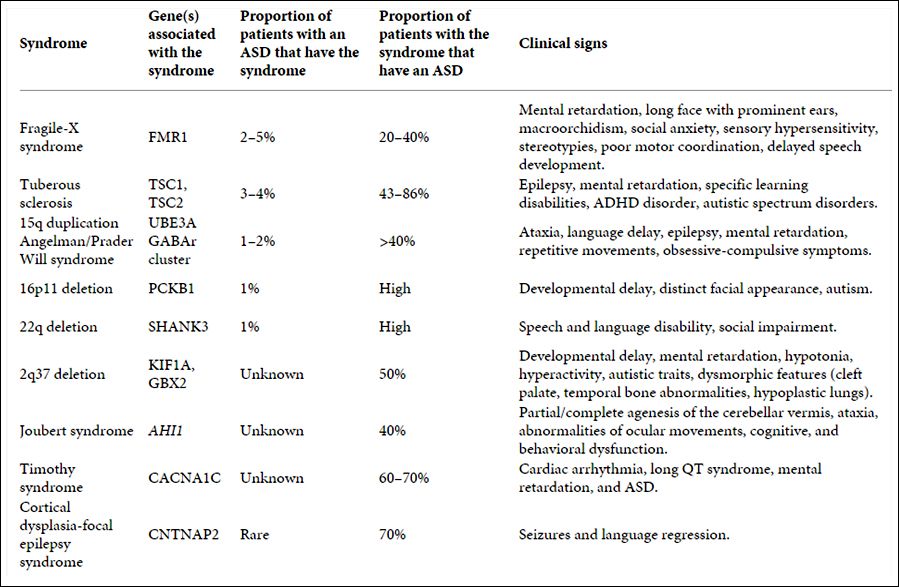
Pathogenesis of Common Syndromes
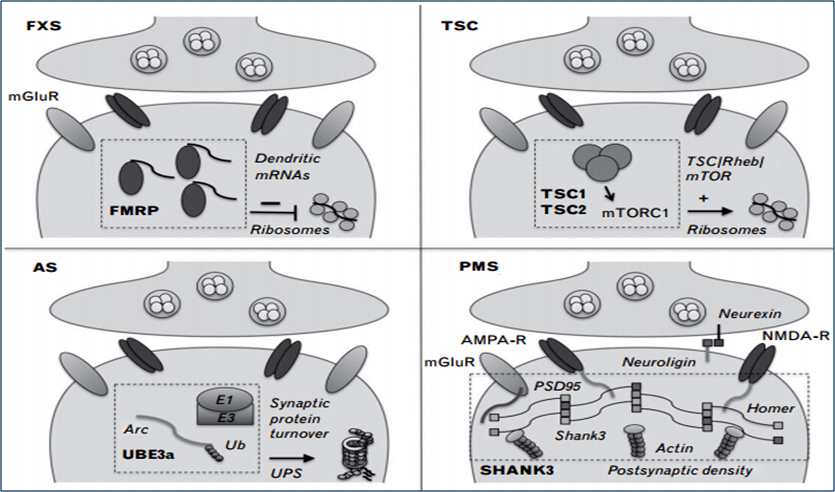
Genetic Factors: Single Genes
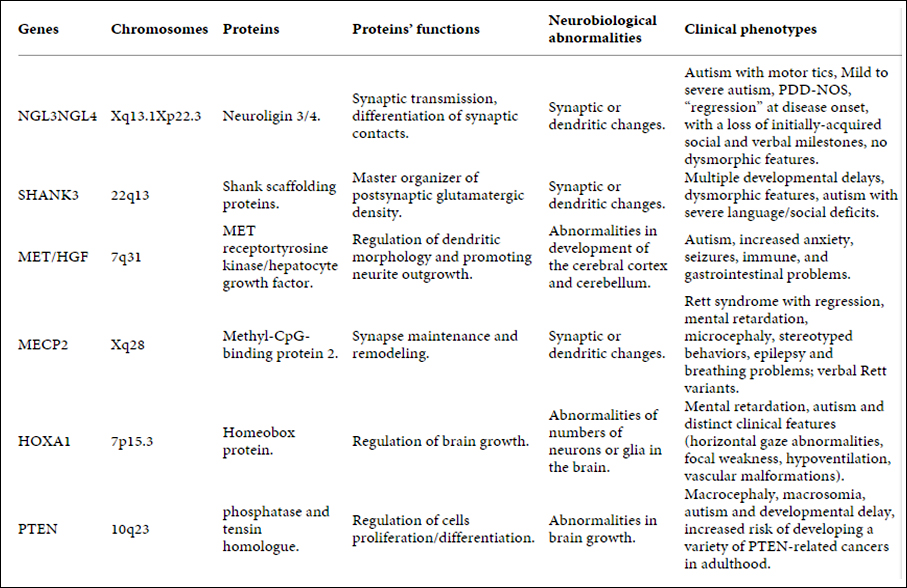
Metabolic Disorders
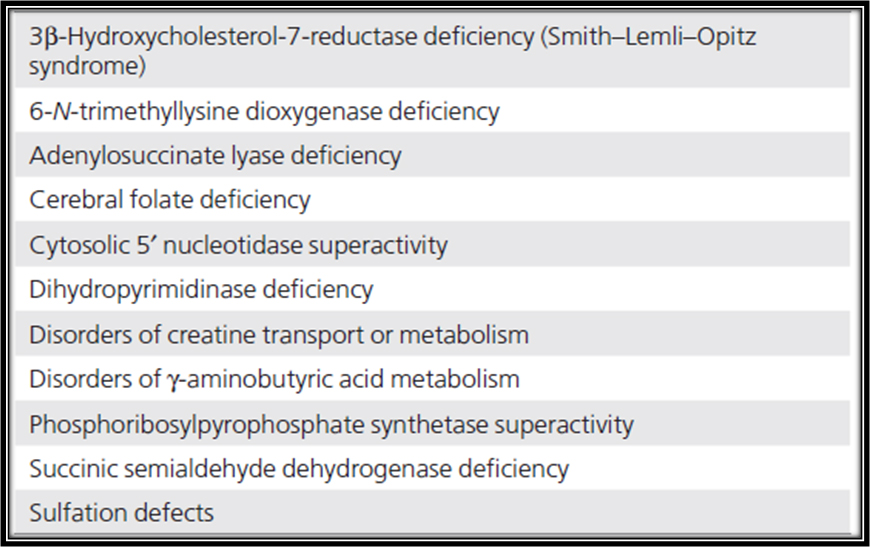
Environmental Factors
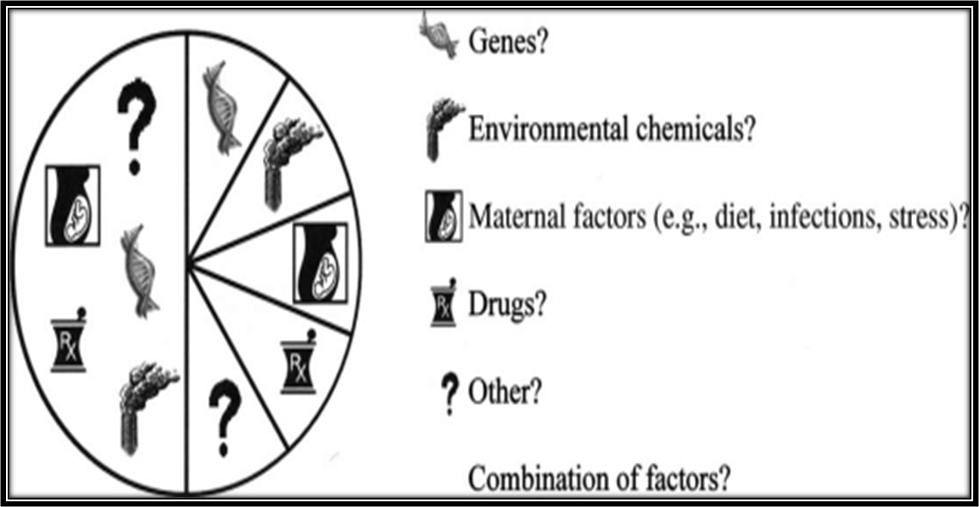
- Dietert RR, Dietert JM, Dewitt JC. Environmental risk factors for autism. Emerging Health Threats Journal. 2011;4:10
- Increasing maternal and paternal age are a risk factor of ASD independently
- Systemiser's child syndrome: Parents who work in the fields of maths, science and engineering might have a higher risk of having an autistic child
- Mutagens in environment, such as mercury, cadmium, nickel, trichloroethylene, and vinyl chloride
- Thiomersal controversy – revival of concerns about the methodological qualities of studies
Windham GC, Fessel K, Grether JK. Autism Res. 2009 Aug;2(4):183-91.
Hurley AM. JPPT. 2010;15(3):173-181.
- Heavy metals: Act by disrupting enzyme functions, altering cellular signaling processes and generating oxidative stress leading to apoptosis; Association or causality has still not been established
- Vitamin D deficiency: Neurosteroid, Brain growth factor, Anti-inflammatory
Vitamin D deficiency may cause mutations, as it contributes to repair of DNA damage
Epigenetics: Gene × Environment Interactions
- An essential mechanism for gene regulation based on chemical modifications of DNA and histone proteins
- Environmental & genetic factors alter gene expression by DNA and histone modification
- Reversible nature; original epigenetic status may be restored
- Several antidepressants and anticonvulsants eg valproate may restore epigenetic state and gene expression
Epigenetics
Kubota T, Mochizuki K et al. Int. J. Environ. Res. Public Health 2016, 13, 504
Critical Prental Windows for Risk of Autism
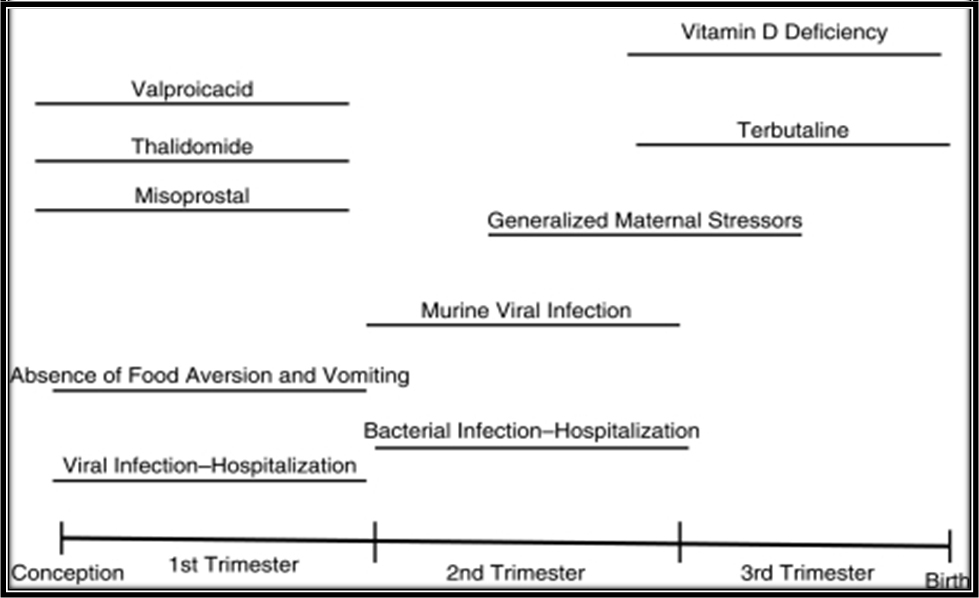
- Dietert RR, Dietert JM, Dewitt JC. Environmental risk factors for autism. Emerging Health Threats Journal. 2011;4:10
Environmental Factors
- Increasing maternal and paternal age are a risk factor of ASD independently
- Systemiser's child syndrome: Parents who work in the fields of maths, science and engineering might have a higher risk of having an autistic child
- Mutagens in environment, such as mercury, cadmium, nickel, trichloroethylene, and vinyl chloride
- Thiomersal controversy – revival of concerns about the methodological qualities of studies
Windham GC, Fessel K, Grether JK. Autism Res. 2009 Aug;2(4):183-91.
Hurley AM. JPPT. 2010;15(3):173-181.
- Heavy metals: Act by disrupting enzyme functions, altering cellular signaling processes and generating oxidative stress leading to apoptosis; Association or causality has still not been established
- Vitamin D deficiency: Neurosteroid, Brain growth factor, Anti-inflammatory
Vitamin D deficiency may cause mutations, as it contributes to repair of DNA damage
Epigenetics: Gene × Environment Interactions
- An essential mechanism for gene regulation based on chemical modifications of DNA and histone proteins
- Environmental & genetic factors alter gene expression by DNA and histone modification
- Reversible nature; original epigenetic status may be restored
- Several antidepressants and anticonvulsants eg valproate may restore epigenetic state and gene expression
Epigenetics
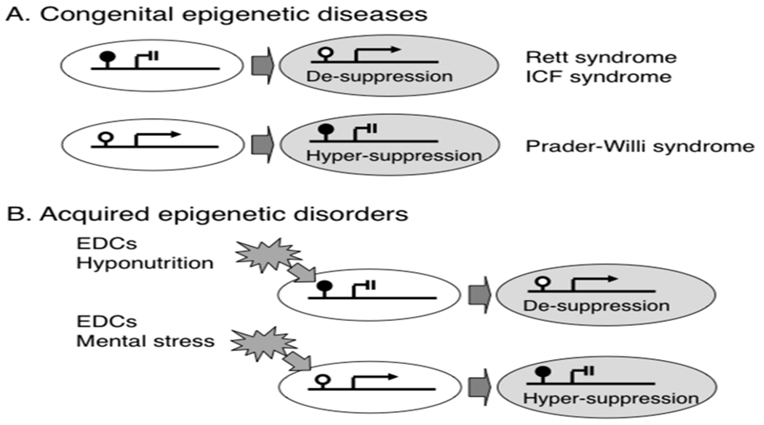
Kubota T, Mochizuki K et al. Int. J. Environ. Res. Public Health 2016, 13, 504
Conclusion
- ASD is a multifactorial hereditary disorder
- Predominant pathways involved:
- Synaptopathies
- Network connectivity aberrations,
- Mirror neuron
- Neuroinflammation
- Genetic factors, environmental factors and epigenetics converge on these pathways leading to genesis of ASD
Thank You















